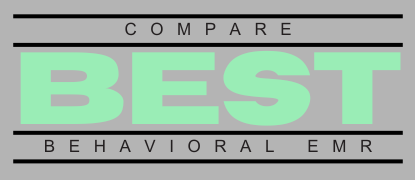If you’re a behavioral health practice owner or clinician, choosing the right behavioral health EMR can make a significant difference in your daily operations, clinical efficiency, and patient satisfaction. With countless options available, comparing and evaluating EMR features can feel overwhelming. This article is designed to simplify the process, helping you identify and evaluate essential behavioral health EMR features that align seamlessly with your practice goals.
Why Evaluating Behavioral Health EMR Features Matters
Behavioral health practices have unique requirements compared to general healthcare providers. An EMR tailored specifically for behavioral health not only meets your clinical documentation needs but also supports compliance, streamlines billing processes, and enhances patient outcomes. Choosing an EMR without proper feature evaluation can lead to inefficiencies, frustration, and costly transitions later.
Step-by-Step Guide to Evaluating Behavioral Health EMR Features
Step 1: Identify Your Practice’s Unique Requirements
Before diving into the EMR market, start by clearly identifying your practice’s specific needs. Consider these factors:
- Practice Size and Specialty: Are you a solo practitioner or part of a larger group? Does your practice specialize in substance use disorder, therapy, psychiatry, or a combination?
- Workflow Preferences: How do your clinicians prefer to document sessions? Will your EMR need to support telehealth services or mobile accessibility?
- Billing and Revenue Cycle: Do you handle billing internally or outsource to an RCM vendor? How critical is integrated billing functionality?
- Compliance and Security: Does your practice require specific compliance certifications (e.g., HIPAA, CARF, or Joint Commission)?
Clearly defining your requirements upfront will make evaluating EMR solutions much easier and more targeted.
Step 2: Review Core Behavioral Health EMR Features
When evaluating behavioral health EMR features, there are several core functions to consider. Make sure your chosen solution covers these essential components:
- Specialized Clinical Documentation: Look for EMRs offering customizable templates specifically tailored to behavioral health, such as progress notes, DSM-5 coding, treatment plans, and outcome measurement tools.
- Integrated Scheduling: Efficient scheduling capabilities can significantly improve your practice’s productivity by minimizing appointment overlaps and no-shows.
- Telehealth Integration: As teletherapy continues to grow, ensure your EMR seamlessly integrates telehealth solutions, enabling secure virtual visits without extra hassle. For more insights on telehealth EMR integration, see our article “Telehealth Integration for Behavioral Health Practices”.
- Billing and Revenue Cycle Management (RCM): Integrated billing features should support claims submission, eligibility checks, and reporting capabilities to streamline your revenue process. You can learn more about billing best practices in our article “Behavioral Health RCM Best Practices.”
- Reporting and Analytics: Robust reporting helps track clinical outcomes, measure practice performance, and identify opportunities for improvement.
Step 3: Compare EMR Solutions With Your Prioritized Features
After clearly defining your requirements and identifying core features, create a comparison matrix or checklist to assess how each EMR vendor stacks up. Consider factors such as:
- User interface and ease of navigation
- Customization options for your specialty and workflows
- Integration options with other software (e.g., CRM, accounting systems)
- Vendor reputation, customer support, and training
- Scalability and flexibility for future growth
- Transparent and affordable pricing structure
For a detailed guide to comparing EMR vendors, check out our article “Comparing Behavioral Health EMR Software: What to Consider.”
Step 4: Request Demos and Gather Feedback from Your Team
Once you’ve narrowed your list, schedule live demos with your top EMR candidates. Encourage your clinicians and administrative staff to participate, as their daily interactions with the software will directly impact operational efficiency. Ask the EMR vendor specific questions based on your prioritized feature list, and don’t hesitate to request references or client testimonials.
Step 5: Evaluate Security, Compliance, and Support
Behavioral health practices must maintain strict compliance with HIPAA regulations. Ensure your chosen EMR solution adheres to industry-standard security measures, including data encryption, access controls, and regular security audits. For guidance on compliance requirements, refer to official resources provided by the U.S. Department of Health & Human Services.
Additionally, consider the vendor’s ongoing support and training resources. A responsive support team and comprehensive training materials can ensure a smooth EMR implementation and transition.
Conclusion: Choosing the Right Behavioral Health EMR Features for Your Practice
Evaluating behavioral health EMR features thoroughly and systematically is crucial for finding the best software solution for your practice. By clearly identifying your needs, reviewing core EMR features, comparing solutions side-by-side, and involving your entire team in the selection process, you’ll significantly increase your chances of choosing an EMR that enhances your practice operations and improves patient care.
If you need personalized assistance identifying the ideal EMR solution tailored specifically to your practice, take advantage of our free practice analysis. Our behavioral health EMR experts will review your practice’s unique needs and recommend solutions that align seamlessly with your goals.
Meta Description (max 155 characters): Learn how to identify and evaluate essential behavioral health EMR features, ensuring your solution aligns with your practice’s goals and workflows.
